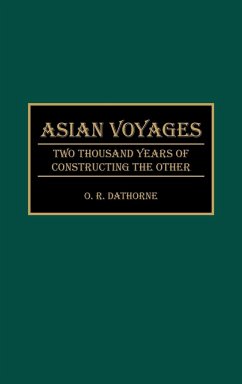
The History, Psychology, and Pedagogy of Geographic Literacy
Versandkostenfrei!
Versandfertig in 1-2 Wochen
88,99 €
inkl. MwSt.

PAYBACK Punkte
44 °P sammeln!
There is widespread belief, confirmed by research, that geographic literacy levels are unacceptably low. This book brings to teachers and others concerned about enlivening the place of geography in the school curriculum information in the several dimensions that must be considered if the contribution of geography to one's general education is to be reasonably understood. Included are (1) the history of geography in the school curriculum, along with why and how this strand has come to occupy the place it does in the modern school curriculum; (2) information about the evolution of modern-day geo...
There is widespread belief, confirmed by research, that geographic literacy levels are unacceptably low. This book brings to teachers and others concerned about enlivening the place of geography in the school curriculum information in the several dimensions that must be considered if the contribution of geography to one's general education is to be reasonably understood. Included are (1) the history of geography in the school curriculum, along with why and how this strand has come to occupy the place it does in the modern school curriculum; (2) information about the evolution of modern-day geographic thinking (including a brief review of its history as a unifying form of intellectual inquiry); (3) reviews of research relating to the development of spatial abilities and the ability to read maps; (4) discussion of the way the teaching of geographic concepts may be incorporated across the curriculum; (5) analyses of the problem of evaluating progress in teaching geographic ideas and of the problems raised by recent technological developments. Geographic literacy is not simply a desirable educational goal but a most important one for today's schools. But today's geography is much more than knowing the names and locations of places around the world or facts about their importance, knowledge that soon becomes out of date. Today's geography emphasizes becoming knowledgeable about the interrelationships that characterize the human occupancy of physical environments-it is more a way of thinking about spatial interractions than it is of specific bits and pieces of information which the passage of time will make out of date. Educational caregivers-teachers, school supervisors and administrators, school board members-will find here a book that integrates our knowledge about the discipline of geography over time, its place in the school curriculum, research data about how students acquire spatial concepts, and how they learn to read maps, providing throughout discussions of meanings for teaching. Teachers teach what they know; they need up-to-date information if they are to become more effective in teaching students how to think about spatial interactions, to think geographically. School leaders need to be sensitive to the nature of geographic inquiry if they are to interpret to teachers and the public what constitutes geographic literacy and, in the process, assist teachers in becoming more effective in helping students achieve the kind of knowledge a broad segment of society agrees is important to citizenship in the 21st century.














